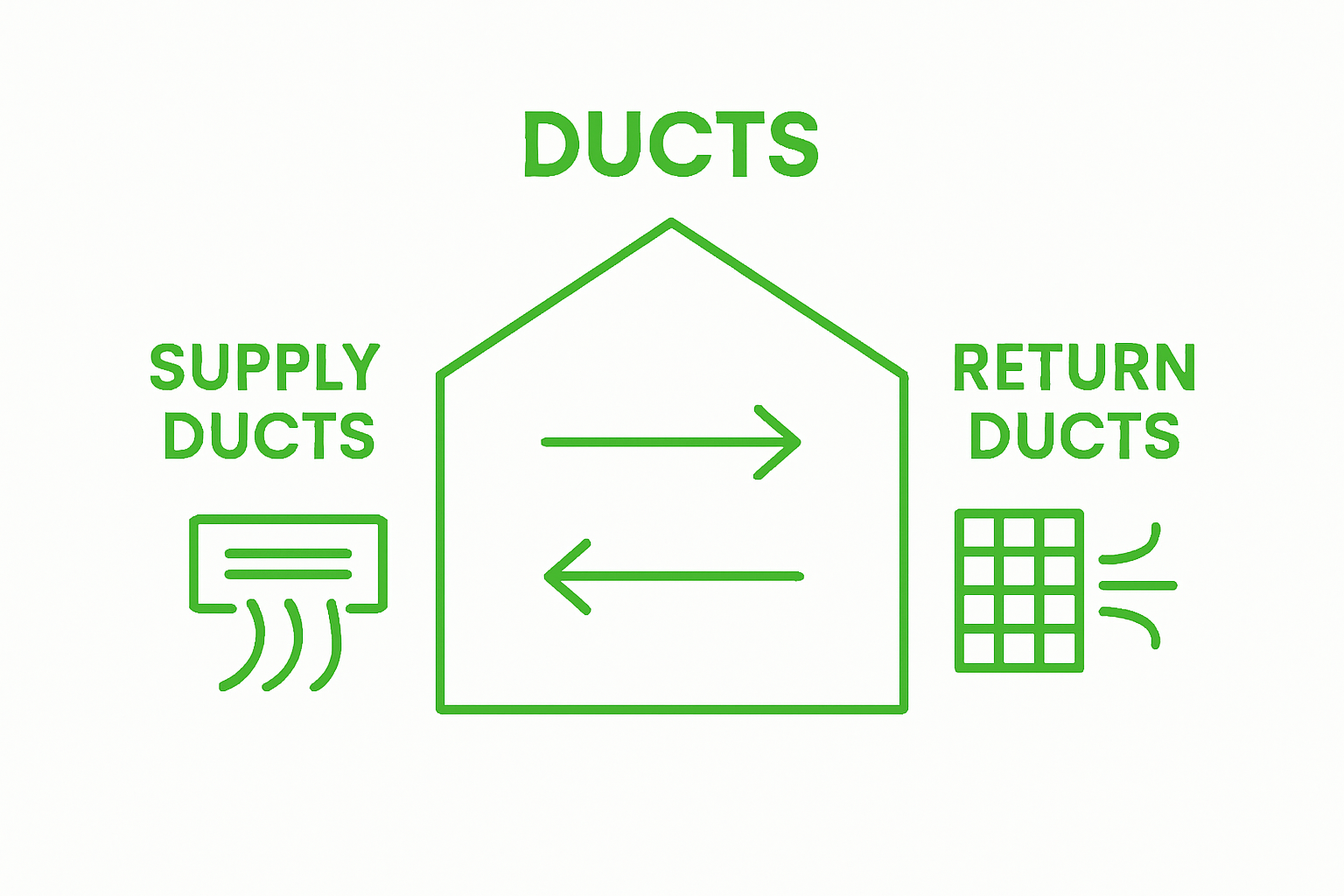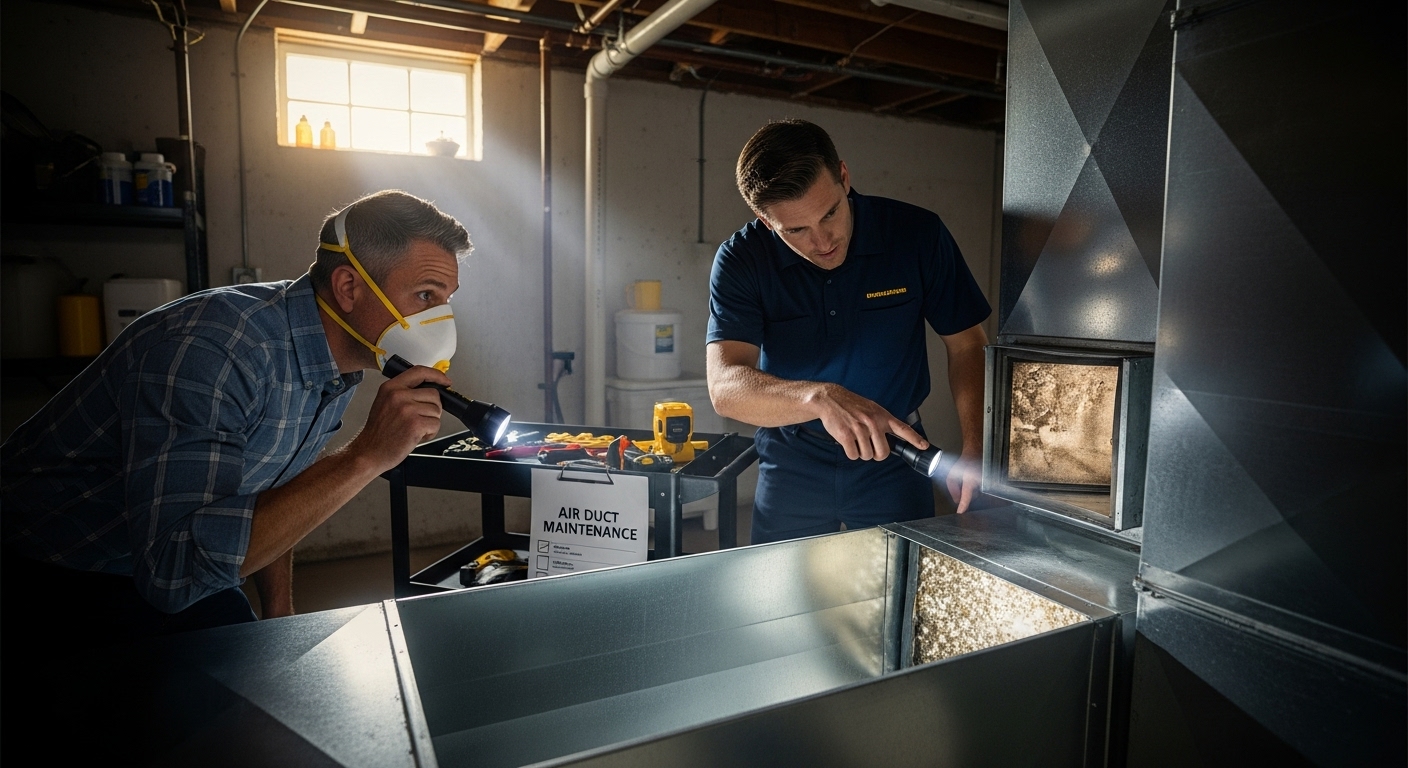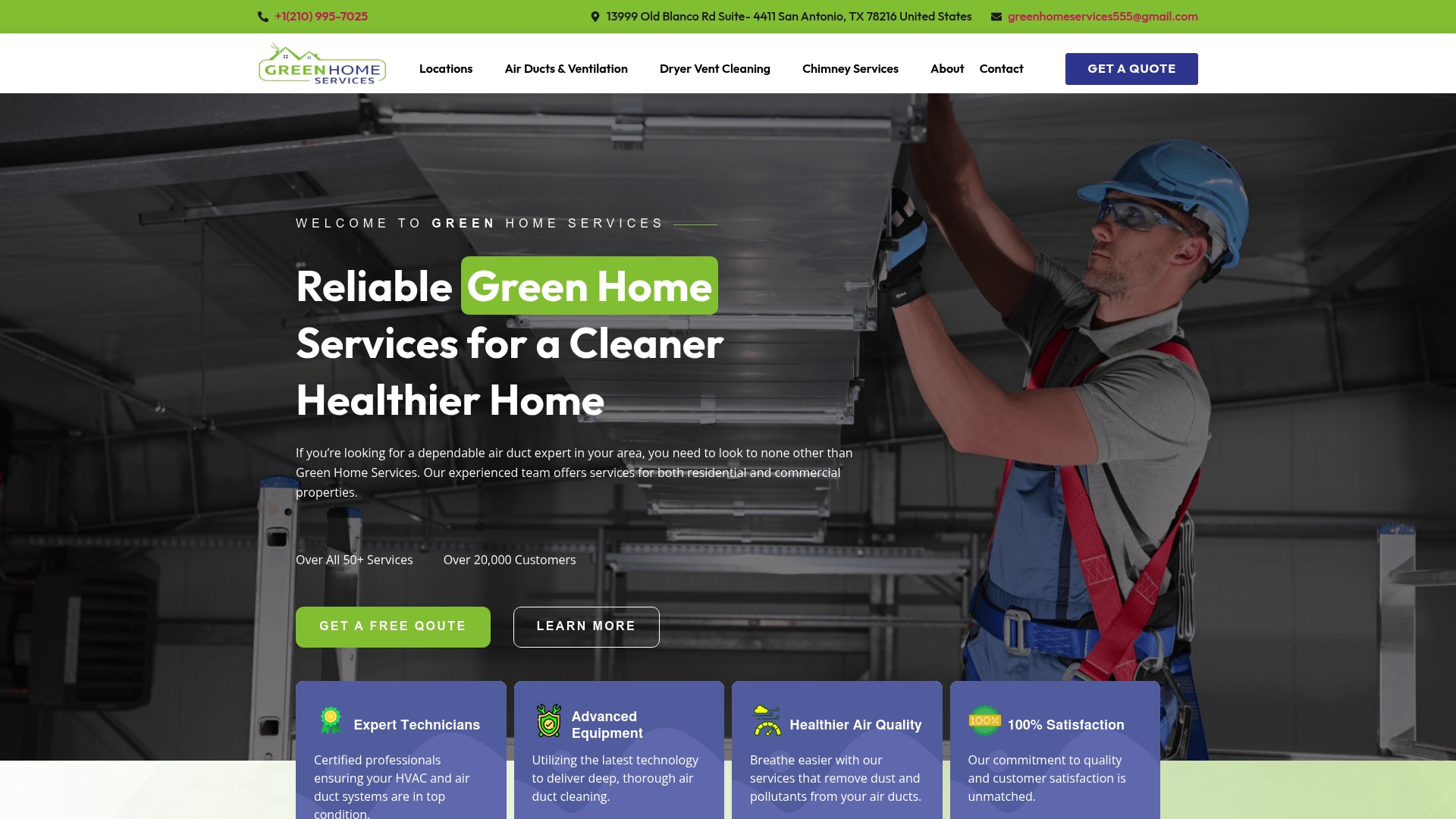Air ducts are the hidden lifelines that keep every room in your home feeling just right, delivering warm or cool air exactly where you need it. Most people never think about them, yet these passages handle up to 20 percent energy loss in homes with poorly maintained ductwork. It sounds like a simple system, but the truth is your comfort and health depend on what happens inside those unnoticed channels.
Table of Contents
- What Are Air Ducts And Their Purpose?
- The Importance Of Air Duct Systems In Homes
- How Air Ducts Distribute Air Throughout Your Home
- Key Components Of Air Duct Systems Explained
- The Impact Of Air Duct Maintenance On Home Efficiency
Quick Summary
| Takeaway | Explanation |
|---|---|
| Air ducts regulate temperature effectively. | They distribute warm or cool air evenly to maintain comfort in all rooms. |
| Proper maintenance improves air quality. | Well-kept ducts filter out allergens, dust, and pollutants, enhancing health benefits. |
| Energy-efficient ducts lower utility bills. | Sealed and well-maintained air ducts reduce energy waste, decreasing monthly expenses by up to 20%. |
| Understanding duct systems enhances home performance. | Knowledge of air duct components and design helps optimize airflow and HVAC efficiency. |
| Regular inspections prevent air quality issues. | Comprehensive duct inspections ensure clean airflow, reducing risks of health problems related to indoor air pollution. |
What are Air Ducts and Their Purpose?
Air ducts are the hidden highways of your home’s heating, ventilation, and air conditioning (HVAC) system, functioning as crucial conduits that transport heated or cooled air throughout your living spaces. These network of passages play a critical role in maintaining indoor comfort and air quality. According to the EPA, air ducts are essential components that connect your HVAC system to different rooms, enabling consistent temperature distribution.
The Anatomy of Home Air Ducts
Typically constructed from sheet metal, flexible plastic, or fiberglass, air ducts are designed with specific characteristics to optimize airflow. They form an interconnected system that includes supply ducts (delivering conditioned air) and return ducts (bringing air back to the HVAC system for reconditioning). The design ensures that every corner of your home receives appropriate temperature control.
Key Functions of Air Duct Systems
Air ducts serve multiple critical purposes beyond simple air transportation. They contribute to:
- Temperature Regulation: Distributing warm or cool air evenly across different rooms
- Air Quality Management: Filtering and circulating air to reduce dust, allergens, and pollutants
- Energy Efficiency: Providing a sealed pathway that minimizes air leakage and energy waste
Understand how these systems work can help homeowners appreciate their importance. For more details on air duct design essentials, our comprehensive guide offers deeper insights into this critical home infrastructure.
The Importance of Air Duct Systems in Homes
Air duct systems are far more than simple infrastructure within your home. They represent a critical component that directly impacts your living environment, health, and overall comfort. According to research from the National Air Duct Cleaners Association, these systems play a pivotal role in maintaining indoor air quality and ensuring efficient home climate management.
Health and Air Quality Considerations
Proper air duct systems significantly influence the air you breathe daily. These networks filter and circulate air, removing potential contaminants like dust, pollen, pet dander, and microscopic particles that could compromise respiratory health. Homes with well-maintained air ducts can dramatically reduce the risk of indoor air pollution, which is especially crucial for individuals with allergies, asthma, or other respiratory sensitivities.
Energy Efficiency and Home Performance
Beyond health benefits, air duct systems directly impact your home’s energy consumption and overall efficiency. Poorly designed or maintained ducts can lead to substantial energy waste. Key performance aspects include:
- Airflow Optimization: Ensuring even distribution of heated or cooled air
- Leakage Prevention: Minimizing air loss through sealed ductwork
- System Strain Reduction: Helping HVAC equipment operate more smoothly
Homeowners can significantly reduce energy bills by ensuring their air duct systems are properly designed, installed, and maintained. Learn more about the long-term benefits of clean air ducts to understand how these systems contribute to your home’s overall performance and your family’s comfort.
How Air Ducts Distribute Air Throughout Your Home
Air ducts serve as a sophisticated transportation network for conditioned air, efficiently moving heated or cooled air from your HVAC system to every room in your home. According to the U.S. Department of Energy, this intricate system ensures balanced temperature distribution and optimal indoor comfort.
The Supply and Return Duct Network
The air distribution process relies on two primary types of ducts: supply and return ducts.
 Supply ducts carry conditioned air from the HVAC unit to individual rooms through vents and registers, while return ducts collect air from different spaces and transport it back to the central system for reconditioning. This continuous circulation allows your HVAC system to maintain consistent temperature and air quality throughout your living spaces.
Supply ducts carry conditioned air from the HVAC unit to individual rooms through vents and registers, while return ducts collect air from different spaces and transport it back to the central system for reconditioning. This continuous circulation allows your HVAC system to maintain consistent temperature and air quality throughout your living spaces.
Airflow Dynamics and Room Coverage
Effective air distribution depends on several critical factors that influence how air moves through your home:
- Duct Size and Design: Properly sized ducts ensure balanced airflow to each room
- Register Placement: Strategic positioning of air vents maximizes air circulation
- Pressure Balancing: Maintaining consistent air pressure prevents hot or cold spots
Our comprehensive air duct inspection guide provides deeper insights into how professional assessment can optimize your home’s air distribution system, ensuring every corner receives the right amount of conditioned air.
Key Components of Air Duct Systems Explained
Air duct systems are complex networks composed of multiple critical components that work together to ensure efficient air circulation and climate control in your home. According to HVAC engineering experts, understanding these key elements is crucial for maintaining optimal home comfort and performance.
Primary Structural Elements
The foundational components of air duct systems include various materials and structural designs. Ducts are typically constructed from sheet metal, flexible plastic, or fiberglass, each offering unique characteristics for air transportation. The primary structural components include main trunk lines that branch into smaller supply and return ducts, connecting directly to your HVAC system’s air handler and extending throughout your home’s interior walls and ceiling spaces.
The following table summarizes the main components found in a typical home air duct system along with their primary functions for easy comparison.
| Component | Description |
|---|---|
| Sheet Metal Ducts | Rigid ducts made from metal, provide durable airflow paths |
| Flexible Plastic Ducts | Lightweight, flexible option for tight spaces |
| Fiberglass Ducts | Ducts with insulation for temperature and noise control |
| Main Trunk Lines | Central ducts that branch out to other parts of the system |
| Supply Ducts | Deliver conditioned air to individual rooms |
| Return Ducts | Transport air back to the HVAC for reconditioning |
| Air Registers and Vents | Control and direct airflow into living spaces |
Essential Functional Components
Beyond basic structural elements, air duct systems incorporate several critical functional components that enhance performance and air quality:
- Air Registers and Vents: Control points for air distribution in individual rooms
- Dampers: Mechanical devices that regulate airflow between different zones
- Air Filters: Remove particulates and improve indoor air quality
- Seals and Connections: Prevent air leakage and maintain system efficiency
Our comprehensive air duct inspection checklist can help homeowners understand and evaluate these critical components, ensuring their home’s air distribution system remains in top condition.
The Impact of Air Duct Maintenance on Home Efficiency
Air duct maintenance is a critical yet often overlooked aspect of home performance that directly influences energy consumption, indoor air quality, and overall HVAC system functionality. According to the Environmental Protection Agency, regular air duct maintenance can significantly improve your home’s operational efficiency and reduce potential health risks associated with poor indoor air circulation.
Energy Efficiency and Cost Savings
Neglected air ducts can become breeding grounds for dust, debris, and potential microbial growth, which create substantial barriers to efficient airflow. When ducts are clogged or improperly sealed, your HVAC system must work harder to maintain desired temperatures, resulting in increased energy consumption and higher utility bills. Properly maintained ductwork ensures smooth air circulation, reducing the strain on your heating and cooling systems and potentially lowering monthly energy expenses by up to 20%.
Indoor Air Quality and System Performance
Regular air duct maintenance provides multiple benefits beyond energy savings. Clean and well-maintained ducts contribute to:
This table compares the effects of well-maintained versus neglected air ducts in terms of air quality, energy efficiency, system performance, and potential health risks.
| Factor | Well-Maintained Air Ducts | Neglected Air Ducts |
|---|---|---|
| Air Quality | Reduced allergens and contaminants | Increased dust and potential pollutants |
| Energy Efficiency | Lower energy bills, minimal air loss | Higher utility costs due to air leakage |
| HVAC System Performance | Runs efficiently with less strain | More wear and tear, frequent breakdowns |
| Health Risk | Decreased risk of respiratory issues | Elevated risk of health problems |
| Temperature Regulation | Even, consistent room coverage | Hot/cold spots, inconsistent comfort |

- Improved Air Quality: Reducing allergens, dust, and potential contaminants
- Enhanced HVAC Longevity: Minimizing wear and tear on system components
- Consistent Temperature Distribution: Ensuring balanced airflow throughout your home
- Preventing Potential Health Risks: Eliminating environments conducive to mold and bacteria growth
Our comprehensive air duct cleaning basics guide offers detailed insights into maintaining your home’s air distribution system, helping you optimize both comfort and efficiency.
Transform Your Home’s Air Quality with Green Home Duct Cleaning
Are you worried about uneven temperatures, rising energy bills, or musty indoor air as discussed in our article on how air ducts work? Many homeowners neglect the hidden network of air ducts in their homes, unaware of how debris, dust, and leaks can disrupt airflow and reduce comfort. If you want to solve these problems and breathe cleaner air, you’re not alone. Our team at Green Home Duct Cleaning is here to bring you the expertise and eco-friendly solutions you need for a healthier home. Explore more about our Uncategorized Services that address every aspect of your ductwork and indoor air quality.

Let’s make air duct problems a thing of the past. Visit Green Home Duct Cleaning now to schedule your professional service. Your path to energy savings, cleaner air, and comfort starts here. Take control of your home’s airflow—act now and enjoy the difference.
Frequently Asked Questions
What are air ducts and what is their purpose?
Air ducts are critical components of your home’s HVAC system, functioning as conduits to transport heated or cooled air throughout your living spaces, ensuring indoor comfort and air quality.
How do air ducts distribute air throughout a home?
Air ducts utilize a network of supply and return ducts. Supply ducts carry conditioned air from the HVAC unit to rooms, while return ducts collect air from those spaces and return it for reconditioning, facilitating balanced temperature distribution.
Why is regular maintenance of air ducts important?
Regular maintenance of air ducts is essential for improving energy efficiency, enhancing indoor air quality, and ensuring the longevity of your HVAC system by preventing dust and debris buildup that obstructs airflow.
What factors affect the airflow in air duct systems?
The airflow in air duct systems is influenced by duct size and design, the placement of air registers, and pressure balancing within the system, all of which ensure efficient and even air distribution throughout the home.
Recommended
- Understanding Air Duct Design Essentials for Your Home – Green Home Services
- Air Duct Inspection Guide 2025 for Texas Homeowners – Green Home Services
- Understanding Why Air Ducts Get Dirty in Your Home – Green Home Services
- Long Term Benefits of Clean Ducts for Texas Homeowners 2025 – Green Home Services
